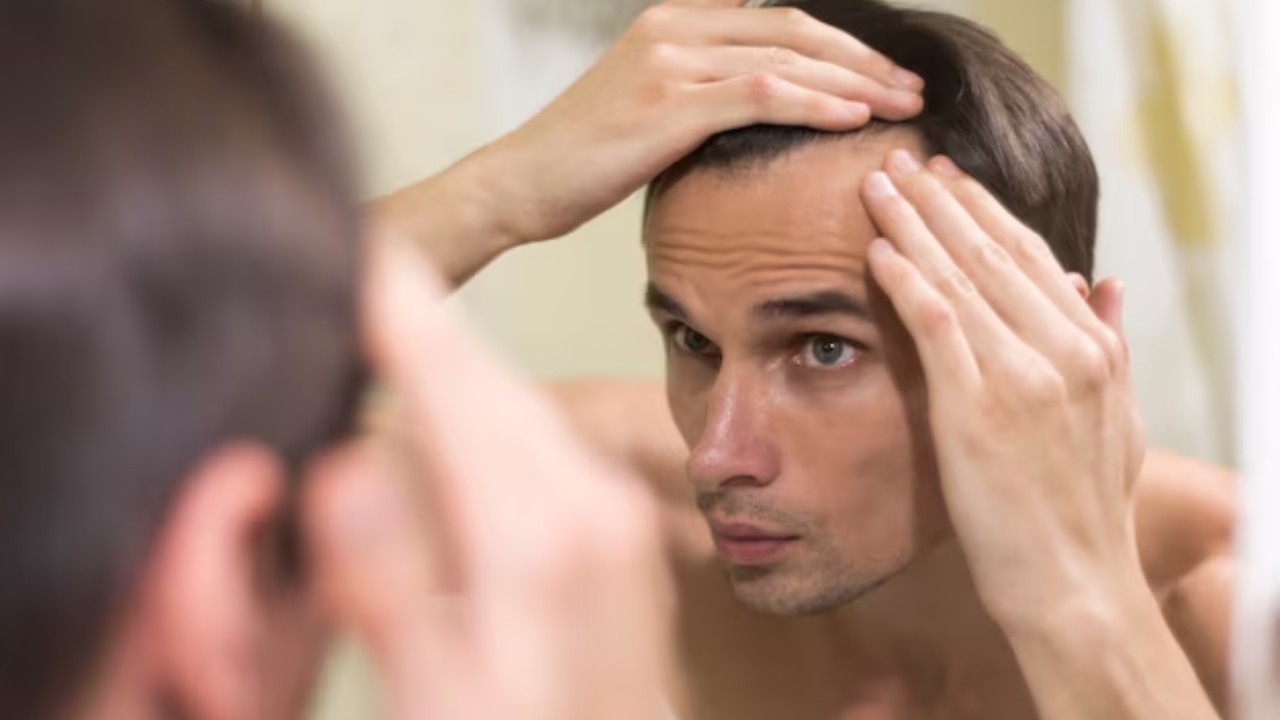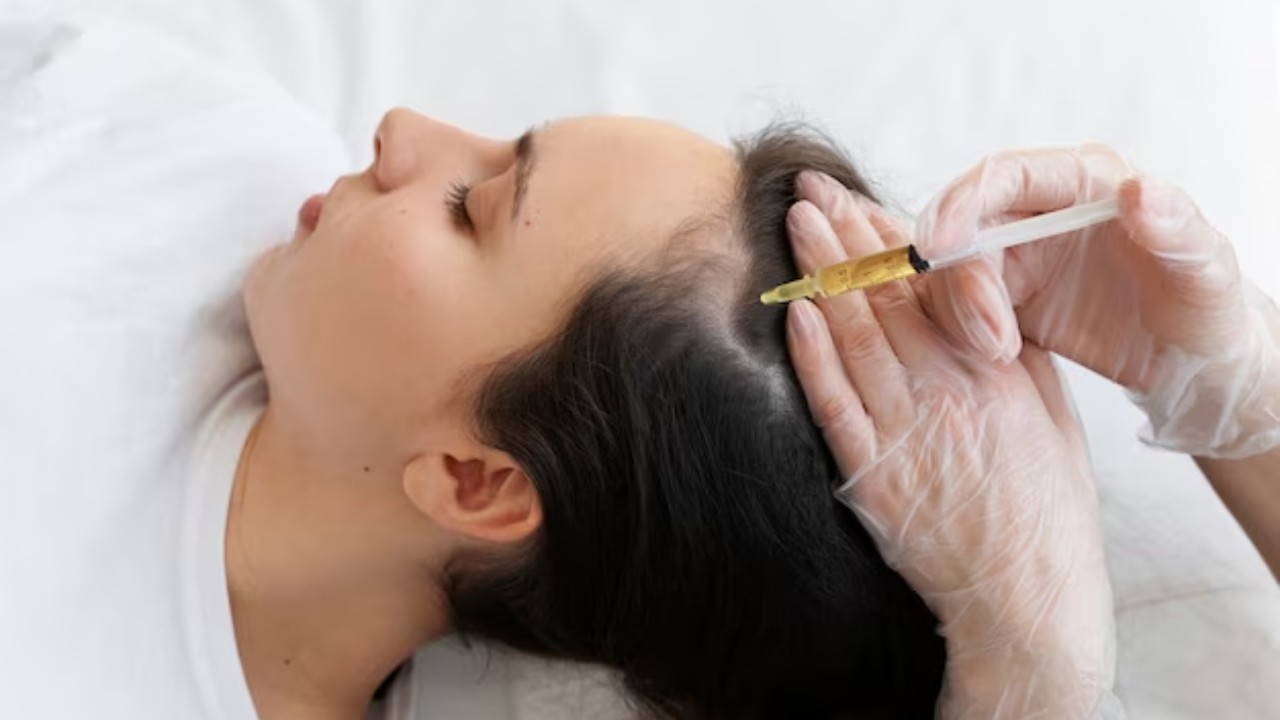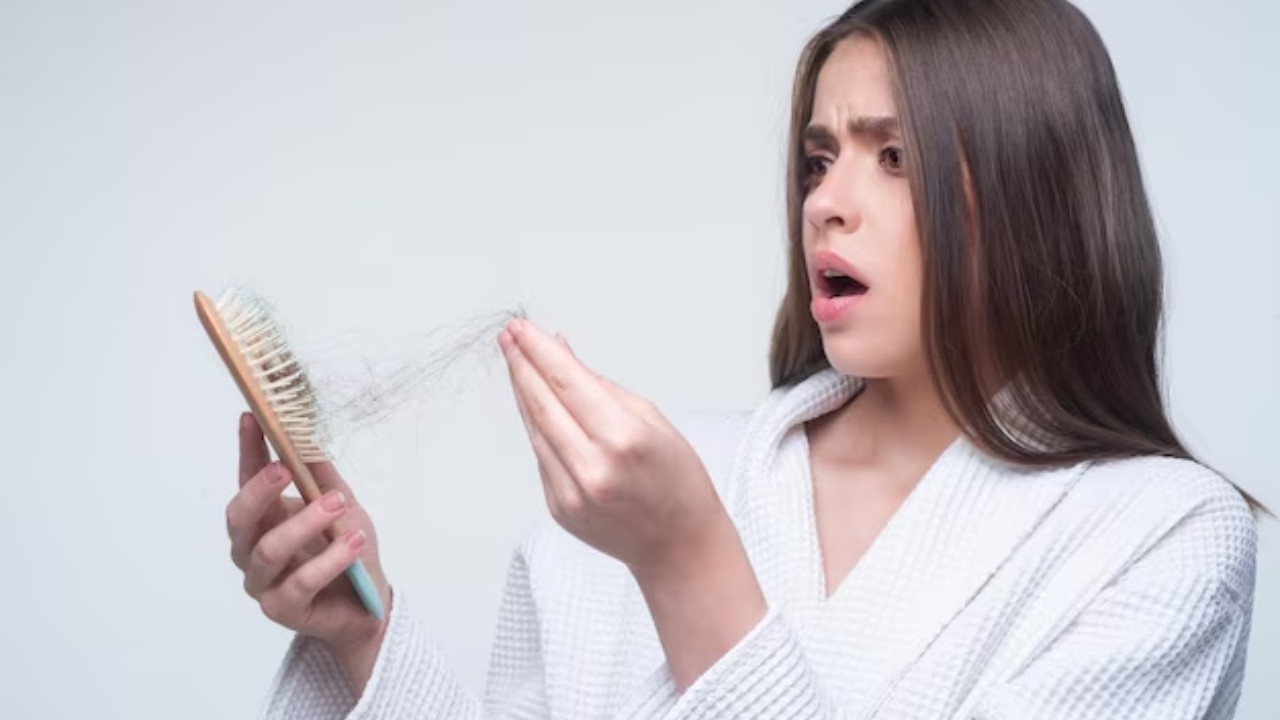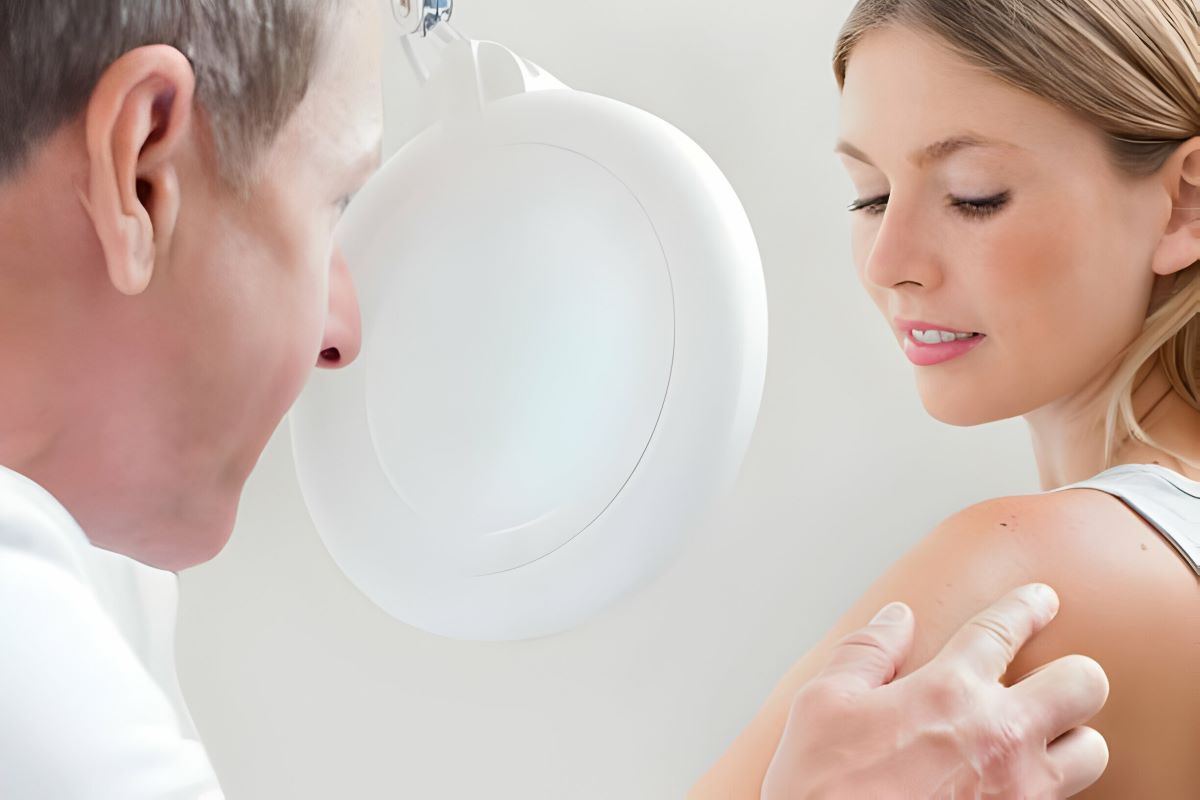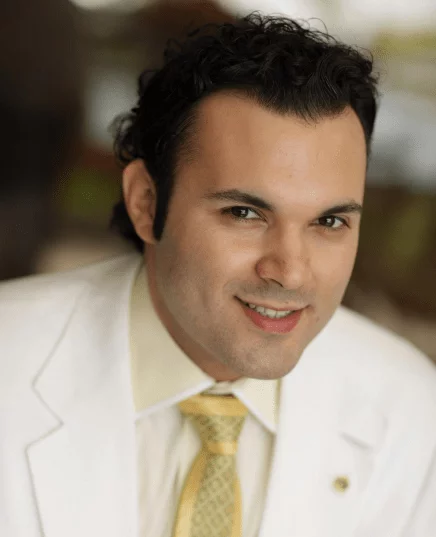Let’s tackle a big question: does minoxidil help bring back hair along your hairline?
You know, that’s the part of your hair right above your forehead. Some people find their hair getting thinner there and wonder if minoxidil can fix it.
Minoxidil is a hair treatment many people use when they notice they’re losing hair. It’s like a special liquid or foam you put on your scalp. But the question is, does it work for the hairline, which is a tricky spot for hair to grow back?
In this blog, we’re going to dig into this topic. We’ll look at what minoxidil is, how it’s supposed to work, and if it’s the hero for hairlines that some people hope it is.
So, let’s get started and see if this treatment is fact or just fiction!
Does Minoxidil Work On Hairline?
Yes, minoxidil is an effective treatment for a receding hairline. While most testing of minoxidil involves hair loss near the crown, it can also be used to treat a receding hairline.
Minoxidil can stimulate hair follicles, improving hair density, normal hair growth, and a thicker appearance. It is available as a topical solution or foam and increases blood flow to the scalp, helping curb hair loss and improve hair growth.
However, it’s important to note that minoxidil may produce modest improvements to receding hairlines and is not a miracle cure for advanced baldness.
Effectiveness of Minoxidil on Hairline
While minoxidil has helped many with their hair woes, its efficacy on the hairline is still debatable. It might be a solution for some, but not a surefire answer for everyone.
What We Know About Minoxidil
Minoxidil is like a special helper for hair growth, often used when people notice their hair getting thinner.
It’s a treatment you apply right where you need it, hoping it will wake up those sleepy hair follicles. For many, it’s like a go-to solution for hair loss. But does it work wonders on the hairline?
Does Minoxidil Work on the Hairline?
The big question everyone’s asking is whether minoxidil can bring back hair along the hairline. The hairline is a tricky spot.
Some people have seen good results, noticing their hair getting thicker around the forehead. But here’s the catch – minoxidil doesn’t work the same for everyone. It’s like a magic potion for some, but it might not do the trick for others.
Studies and Research
When scientists looked into minoxidil, they found it works best on certain head parts, like the crown. But less evidence shows it works just as well on the hairline.
It’s a gray area, with some studies showing positive results and others not. It’s like putting together a puzzle with some missing pieces.
What This Means for You
If you’re thinking about using minoxidil for your hairline, it’s a gamble. It could work and bring back that full, thick hair along your forehead, or it might not make much difference. It’s like rolling the dice and hoping for the best outcome.
A Word of Caution
Remember, minoxidil isn’t a quick fix. It takes time, often months, to see any changes. And if you stop using it, your new hair might say goodbye and leave. So, it’s a commitment you’ll want to think about before diving in.
Comparing Minoxidil and PRP Therapy
Choosing between Minoxidil and PRP therapy for hairline restoration depends on your specific situation, how much daily commitment you’re up for, and what kind of results you’re hoping to see.
The Approach: Topical vs. Injected
When looking at Minoxidil and PRP (Platelet-Rich Plasma) therapy, the first big difference is how they’re used. Minoxidil is a topical solution or foam – you apply it directly when seeing hair loss. It’s like watering plants on a dry lawn.
On the other hand, PRP therapy is more like a special treatment. It involves taking some of your blood, spinning it to concentrate the good stuff (platelets), and injecting it into your scalp. It’s like using a special fertilizer to help the whole lawn grow evenly.
Effectiveness: What Works Where?
Minoxidil has a track record of working well in certain areas, like the crown of the head, but it’s a bit hit-or-miss on the hairline. PRP, meanwhile, offers a more targeted approach.
Because it’s injected, it can be directed exactly where it’s needed, potentially making it more effective for tricky areas like the hairline.
Time and Commitment
With Minoxidil, you’re looking at a daily commitment, applying it twice daily for the best chance of seeing results. And if you stop, you might lose what you’ve gained.
PRP therapy, however, usually involves a few treatment sessions spread out over time and then some maintenance visits. It’s not a daily chore but requires a bit more effort upfront.
Results: Slow and Steady vs. Quick Impact
Minoxidil often takes a while to show results – we’re talking months. And the results can vary a lot from person to person.
PRP therapy can show results more quickly, often within a few weeks or months. And because it uses your body’s healing abilities, the results can be more consistent.
Safety and Side Effects
Both treatments are generally safe. Minoxidil might cause some scalp irritation, and in rare cases, it can affect blood pressure.
PRP therapy, being a bit more involved, carries a small risk associated with blood draws and injections, like bruising or infection, but these are rare when done by a professional.
Cost Comparison
Minoxidil is often seen as the more budget-friendly option, available over the counter.
PRP therapy can be more of an investment, requiring specialized equipment and professional expertise. However, the cost of PRP can be worth it for the targeted, potentially more effective results.
Making the Right Choice for Hair Restoration

choosing between Minoxidil and PRP therapy for hairline restoration is a personal decision based on various factors, including the nature of your hair loss, lifestyle, budget, and expectations.
Understanding the pros and cons of each treatment will guide you in making an informed choice that best suits your needs.
Evaluating Your Hair Loss Situation
When choosing a treatment for hair restoration, the first step is understanding your unique hair loss situation. Are you just beginning to notice thinning along your hairline, or has it been a concern for a while? Is your hair loss localized to the hairline, or is it more widespread?
These questions are crucial because they help determine which treatment – Minoxidil or PRP therapy – might suit you better.
Considering Treatment Effectiveness and Preferences
Reflect on what you’re most comfortable with regarding treatment application and maintenance. Minoxidil requires daily application, which is relatively straightforward but demands consistency.
On the other hand, PRP therapy, offered at clinics like Dr. Nazarian’s, involves a few initial sessions and then periodic maintenance. It’s less of a daily commitment but requires visits to a specialist.
Understanding the Financial Aspect
Cost is an essential factor. Minoxidil is generally more affordable and easily accessible. PRP therapy is a more significant investment but can offer more targeted and potentially more effective results.
Consider your budget and how much you’re willing to invest in your hair restoration journey.
Looking at Long-Term Commitment
Think about the long-term aspect of both treatments. With Minoxidil, if you stop using it, you risk losing the hair that regrew.
PRP therapy may have longer-lasting effects after the initial set of treatments, but it also may require follow-up sessions for maintenance.
Seeking Professional Advice
Consulting with a hair restoration specialist like Dr. Nazarian can provide personalized insights into your hair loss. A professional can assess your hair’s condition, discuss your medical history, and recommend the most suitable treatment option.
Weighing Safety and Convenience
Both treatments have high safety profiles when administered correctly. Minoxidil is convenient to use at home, while PRP therapy requires visits to a clinic. Consider which fits better into your lifestyle and comfort level.
Making an Informed Decision
Finally, it’s about making an informed decision that aligns with your hair restoration goals, lifestyle, and budget. Whether it’s the ease of Minoxidil or the personalized approach of PRP therapy, the choice should be one that you’re comfortable with and committed to in the long run.
Final Worlds
Choosing the proper hair restoration treatment is a big decision. Whether you’re considering Minoxidil for its convenience or intrigued by the personalized PRP therapy approach, choosing a path that aligns with your hair restoration goals and lifestyle is essential.
At PRP Treatment Beverly Hills, under the expert guidance of Dr. David Nazarian, we specialize in providing tailored PRP treatments that cater to your unique needs, offering a promising solution for hairline restoration.
If you’re ready to explore how PRP therapy can benefit you, or if you’re looking for more information to make an informed decision, we’re here to help. Visit us at PRP Treatment Beverly Hills to learn more about our services or schedule a consultation.
Let us be a part of your journey towards achieving a fuller, healthier head of hair.


